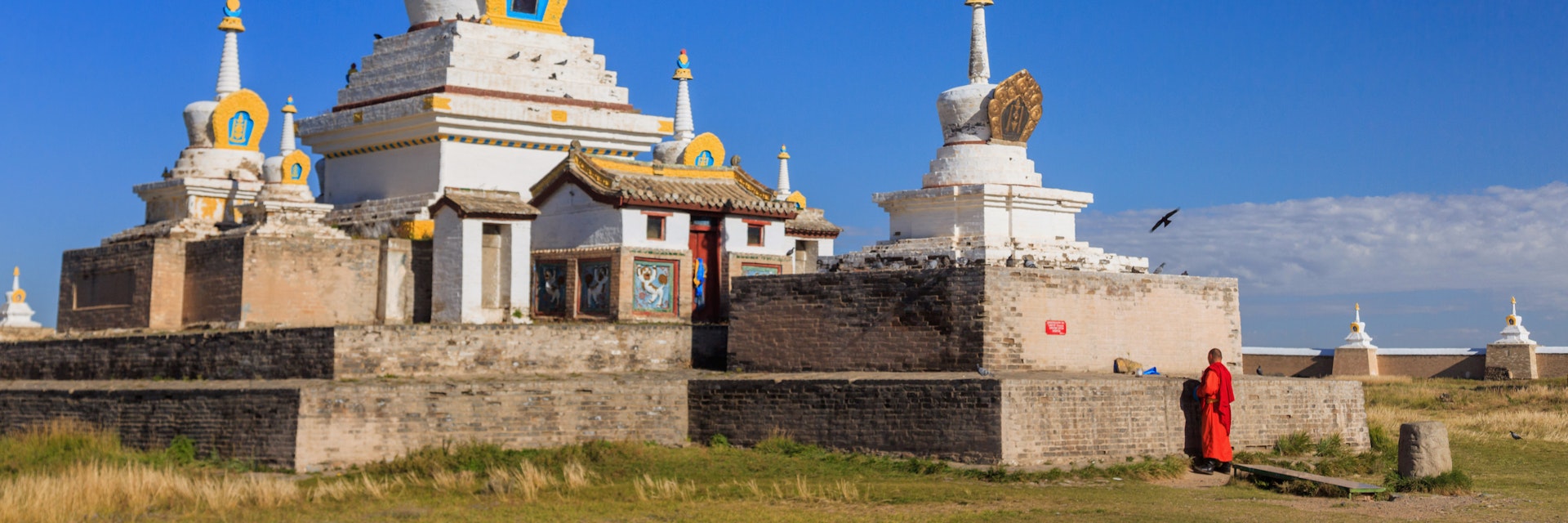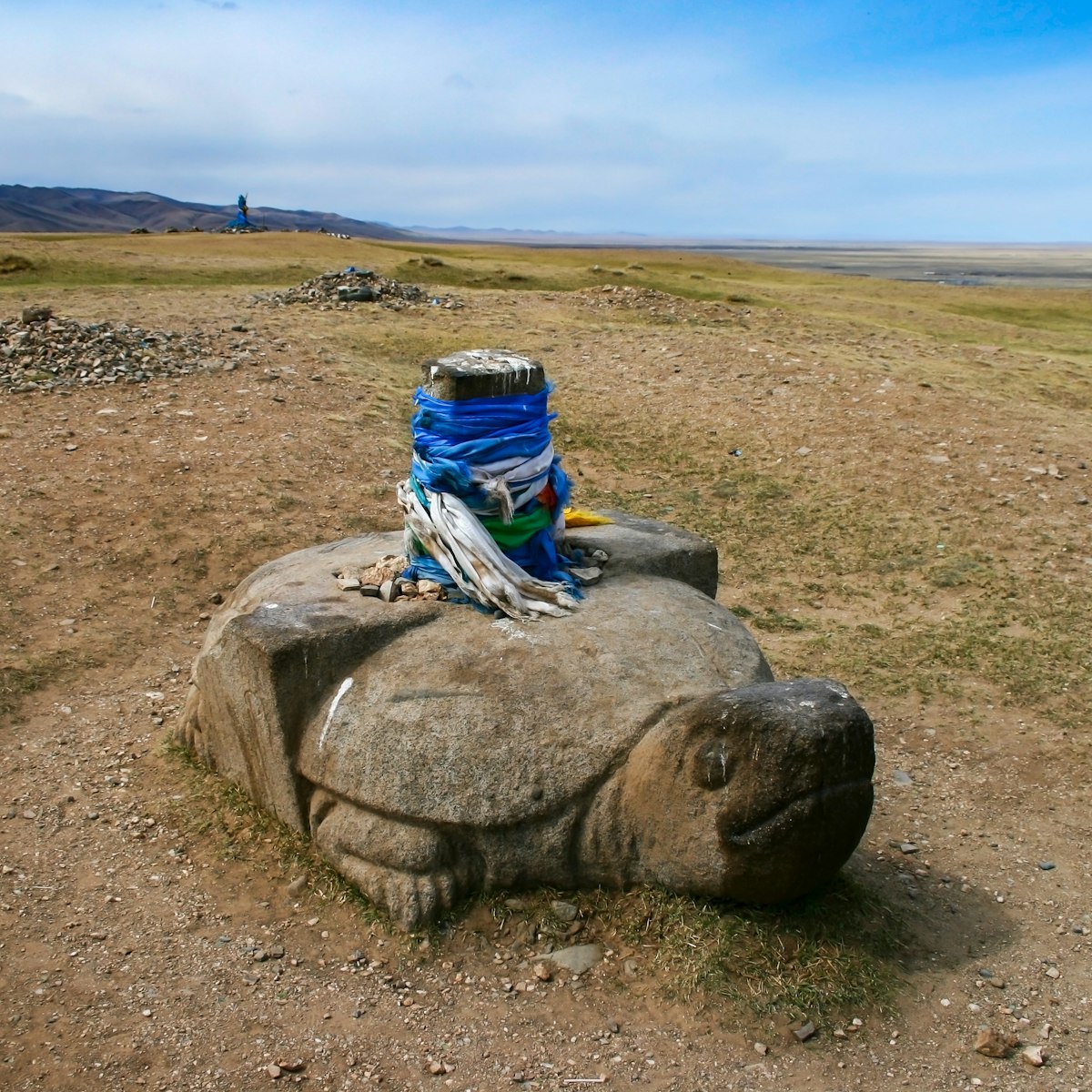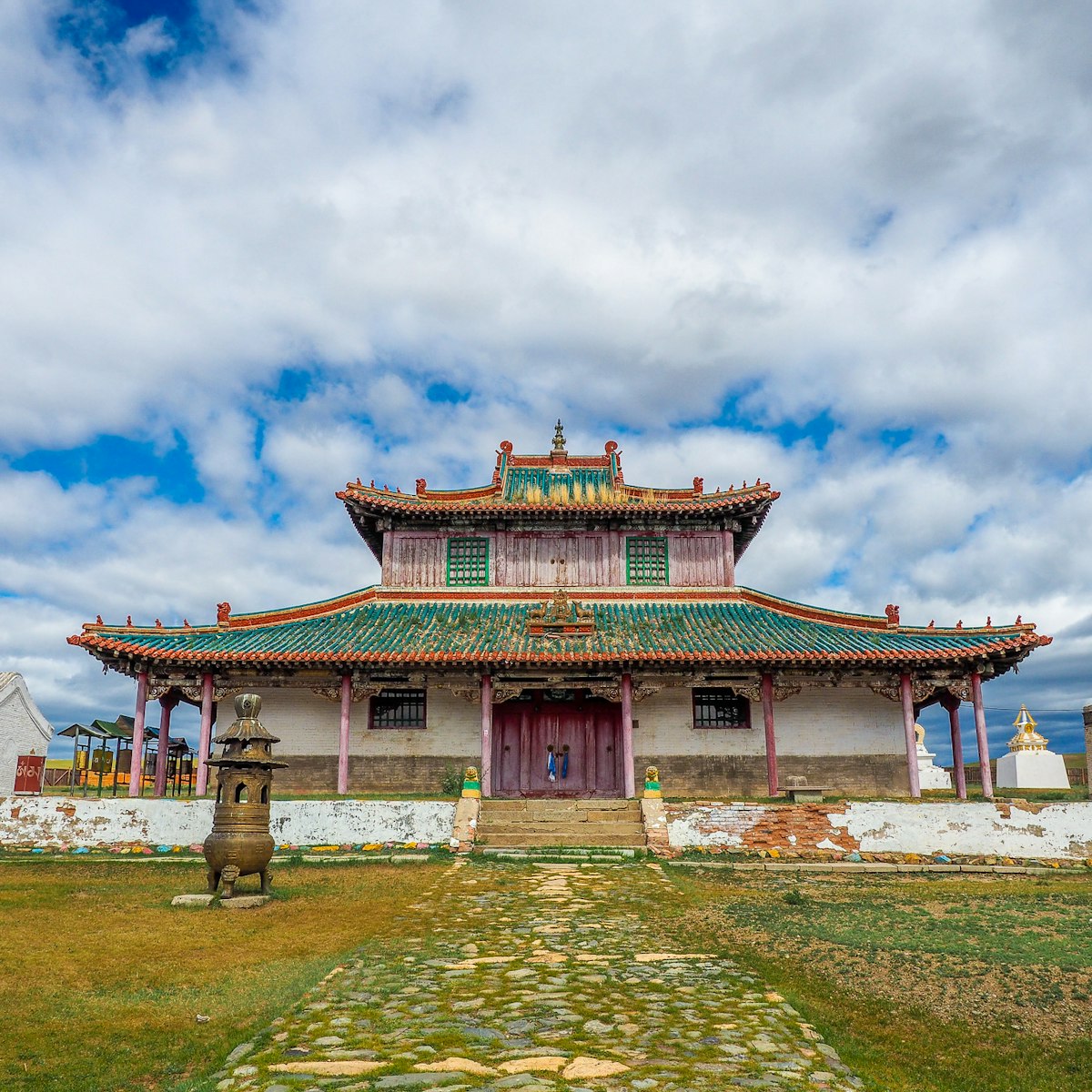Founded in 1586 by Altai Khaan, Erdene Zuu (Hundred Treasures) was the first Buddhist monastery in Mongolia. The monastery went through periods of neglect and prosperity until finally the Stalinist purges of 1937 put it completely out of business. The monastery remained closed until 1965, when it was permitted to reopen as a museum, but not as a place of worship. It was only with the collapse of communism in 1990 that religious freedom was restored and the monastery became active again.
Today Erdene Zuu Khiid is considered by many to be the most important monastery in the country, though no doubt it’s a shadow of what it once was. At its peak, it had between 60 and 100 temples, around 300 gers inside the walls, and up to 1000 monks in residence. All but three of the temples in Erdene Zuu were destroyed during the purges and an unknown number of monks were either killed or sent to Siberian gulags. A surprising number of statues, tsam masks and thangkas were saved, however – possibly with the help of a few sympathetic military officers. The items were buried in nearby mountains, or stored in local homes (at great risk to the residents).
Entrance to the walled monastery grounds is free. If you want to see inside the main temple, you’ll have to buy a ticket, which includes a guided tour of the site with an English-speaking guide.
The main temples date from the 16th century. Most of the artefacts you'll see – wall paintings, thangkas, masks etc – are from the 18th century. Many are in excellent condition. The monastery is an easy 2km walk from the centre of Kharkhorin.
Temples
The monastery is enclosed in an immense walled compound. Spaced evenly along each wall, about every 15m, are 108 stupas (108 is a sacred number to Buddhists). The three temples in the compound – Zuu of Buddha, Zuun Zuu and Baruun Zuu – which were not destroyed in the 1930s, are dedicated to the three stages of Buddha’s life: childhood, adolescence and adulthood.
Dalai Lama Süm was built in 1675 to commemorate the visit by Abtai Khaan’s son, Altan, to the Dalai Lama in Tibet. The room is bare save for a statue of Zanabazar and some fine 17th-century thangkas depicting the Dalai Lamas and various protector deities.
Inside the courtyard, Baruun Zuu, the temple to the west, built by Abtai Khaan and his son, is dedicated to the adult Buddha. Inside, on either side of Sakyamuni (the historical Buddha), are statues of Sanjaa (Dipamkara in Sanskrit), the Past Buddha, to the left; and Maidar (Maitreya in Sanskrit), the Future Buddha, to the right. Other items on display include some golden ‘wheels of eternity’, naimin takhel (the eight auspicious symbols), figurines from the 17th and 18th centuries, and balin (wheat dough cakes, decorated with coloured medallions of goat or mutton fat), made in 1965 and still well preserved. Look out for the inner circumambulation path leading off to the left, just by the entrance.
The main and central temple is called the Zuu of Buddha. The entrance is flanked by the gods Gonggor on the left and Bandal Lham (Palden Lhamo in Sanskrit) on the right. Inside, to the right of the statues of the child Buddha, is Otoch Manal (the Medicine Buddha), while to the left is Holy Abida (the god of justice). The temple also contains statues of Niam and Dabaa, the sun and moon gods respectively, a few of the tsam masks that survived the purges, some carved, aggressive-looking guards from the 16th and 17th centuries, and some displays of the work of the revered sculptor and Buddhist, Zanabazar.
In the temple to the east, Zuun Zuu, there’s a statue depicting the adolescent Buddha. The statue on the right is Tsongkhapa, who founded the Yellow Hat sect of Buddhism in Tibet. The figure on the left is Janraisig (Chenresig in Tibetan, Avalokitesvara in Sanskrit), the Bodhisattva of Compassion.
As you walk north you will pass the Golden Prayer Stupa, built in 1799. The small locked temple next to it, with a blue-tiled roof, is thought to pre-date the monastery itself by around 200 years.
The large white temple at the far end is the Tibetan-style Lavrin Süm, where ceremonies are held every morning, usually starting at around 11am; the times vary so ask at the office. Visitors are welcome, but photographs during ceremonies are not. This temple is the most active and atmospheric part of the whole complex.
Other Sights
Apart from the main temples, there are several other interesting things to see. The gravestones of Abtai Khaan (1554–88) and his grandson Tüshet Khaan Gombodorj (the father of Zanabazar) stand in front of the Dalai Lama Süm and are inscribed in Mongol, Tibetan and Arabic scripts. In the northeast of the monastery are the base stones of a gigantic ger, now called the Square of Happiness and Prosperity, set up in 1639 to commemorate Zanabazar’s birthday. The ger was reported to be 15m high and 45m in diameter, with 35 concertina-style walls, and could seat 300 during the annual assemblies of the local khaans.



